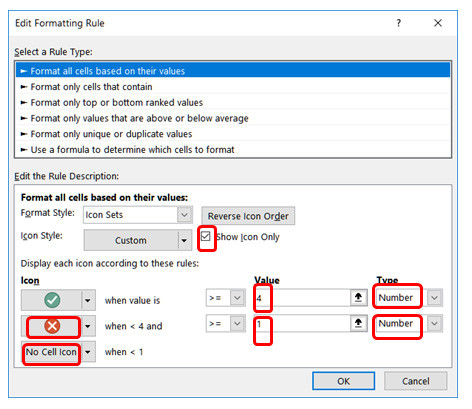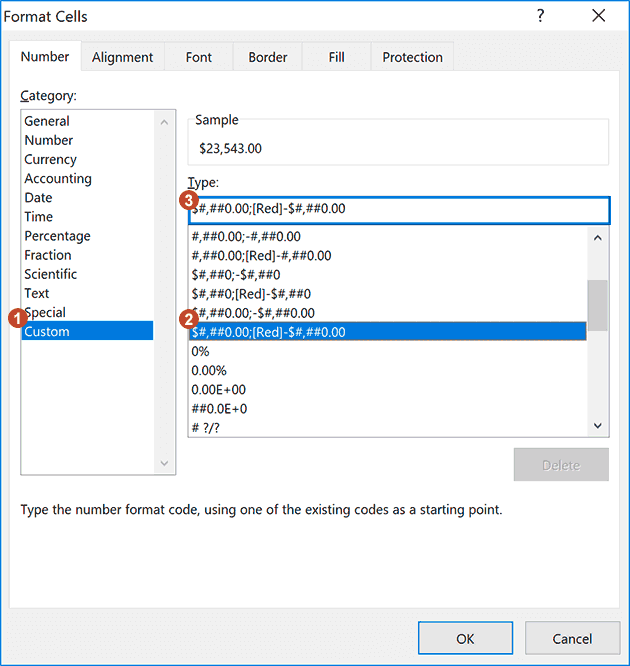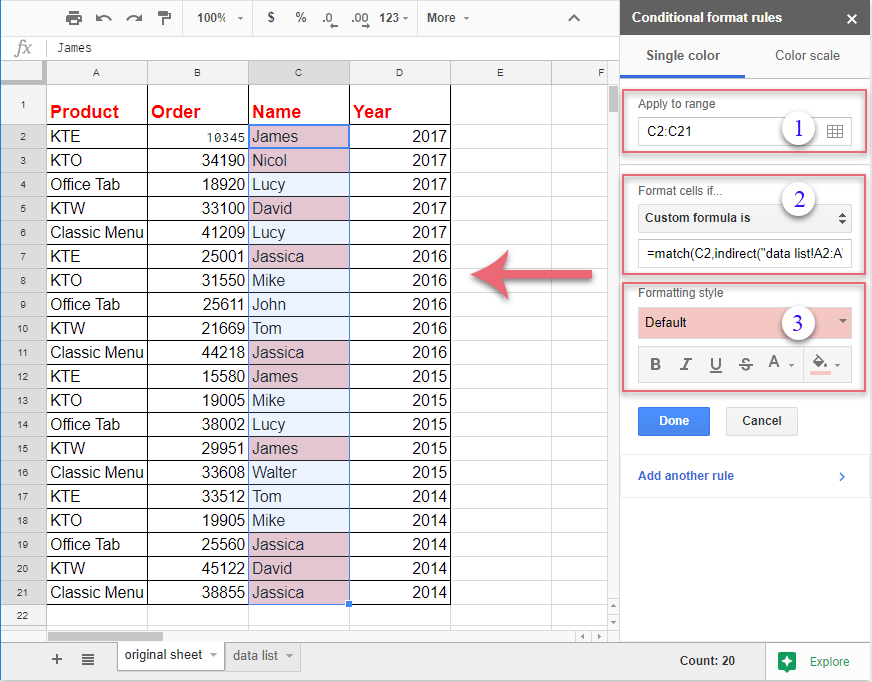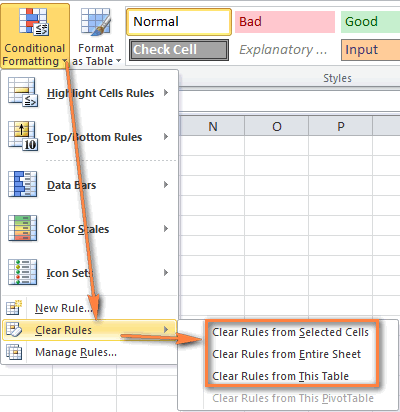

If you struggle with this, see the section on Dummy Formulas below. Imagine that you entered the formula in the upper-left cell of the selection, and then copied the formula across the entire selection. the upper-left cell). The trick to understanding how conditional formatting formulas work is to visualize the same formula being applied to each cell in the selection, with cell references updated as usual. When conditional formatting is applied to a range of cells, enter cell references with respect to the first row and column in the selection (i.e.

The above formulas all return TRUE or FALSE, so they work perfectly as a trigger for conditional formatting. Here's the result of the rule applied to the range B4:F8 in this spreadsheet: Formulas give you maximum power and flexibility.įor example, using the "Equal to" preset, it's easy to highlight cells equal to "apple".īut what if you want to highlight cells equal to "apple" or "kiwi" or "lime"? Sure, you can create a rule for each value, but that's a lot of trouble. Instead, you can simply use one rule based on a formula with the OR function: By using your own formula, you take over the condition that triggers a rule and can apply exactly the logic you need.

However, you can also create rules with your own custom formulas. With conditional formatting, you can do things like highlight dates in the next 30 days, flag data entry problems, highlight rows that contain top customers, show duplicates, and more.Įxcel ships with a large number of "presets" that make it easy to create new rules without formulas. The conditional formats are applied to the same cells on the other worksheets.Quick Start | Examples | Troubleshooting | TrainingĬonditional formatting is a fantastic way to quickly visualize data in a spreadsheet. You can then re-run the macro as you display each of your other worksheets, in turn.

The second workaround involves running the macro recorder while setting up the conditional formatting on your first worksheet. Next, click the Format Painter (on the Home tab of the ribbon in the Clipboard group), switch to the target worksheet, and select the cells to which the formatting should be applied. Apply the conditional formatting to the first worksheet, then select all those cells to which you applied the formatting. The first workaround involves copying the conditional formatting from one worksheet to another. We were able to come up with only two workarounds. (The ribbon-based interface was introduced with Excel 2007.) Why did they do this? I have no idea, but users are stuck with the results of the change-not being able to apply conditional formatting across multiple worksheets at the same time. It seems that Microsoft did make this change as part of the ribbon-based user interface used in modern versions of Excel. Paula is wondering how she can apply conditional formatting to more than one sheet at a time. But when she selects more than one worksheet in Excel now, the conditional formatting option fades. Prior to upgrading her version of Excel, Paula was able to select more than one sheet and apply conditional formatting to a group of cells.


 0 kommentar(er)
0 kommentar(er)
